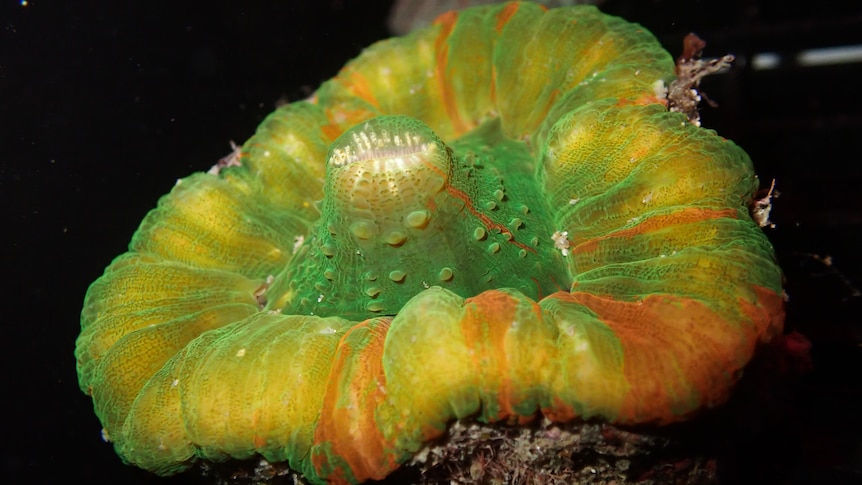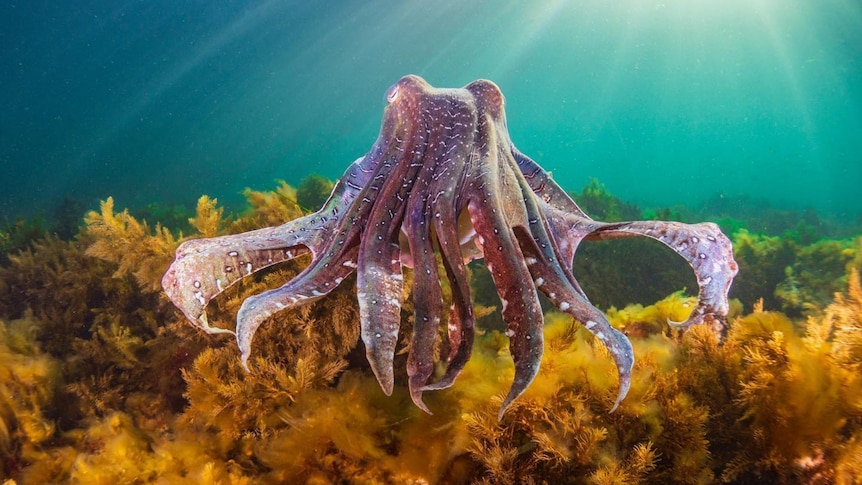Baby corals have been successfully spawned and grown for the first time by an Australian farm in a process that could one day help restore the Great Barrier Reef.
Key points:
- Monsoon Aquatics has recorded the first spawning of a coral species at its Bundaberg aquaculture facility
- The worldwide aquarium industry is reportedly worth $4 billion
- Commercial industry could lead reef restoration of the Great Barrier Reef
Monsoon Aquatics operates Australia’s largest dedicated land-based coral farm at Burnett Heads near Bundaberg, where the company recorded the first spawning event of Homophyllia australis last November.
Almost 10 months later, the company has been able to grow baby corals in captivity, hailing the spawning event with success.
“That’s a species of coral which is basically only found from around Pancake Creek up to the Whitsunday area and Swains Reef, and so it’s unique to this southern Great Barrier Reef area,” company director Daniel Kimberley said.
Craig Humphrey from the Australian Institute of Marine Science’s national sea simulator said it was a “significant achievement”.
“If there’s a decline in the reef… these things could be bred in captivity to supply the market,” he said.
From the reef to the aquarium
Monsoon Aquatics is one of 39 active license holders in Queensland’s commercial coral fishery who can target a broad range of specialty corals to be sold to aquariums and hobbyists.
According to Queensland Fisheries, there was 100 tonnes of coral harvested from the Great Barrier Reef in the 2020-21 financial year.
“If you were to look at the reef as a whole, it’s a fraction of what’s out there,” Mr Kimberley said.
“The worldwide aquarium industry is worth over $US4 billion.
“A lot of that product is coming out of Indonesia and Vietnam and Tonga and Fiji and places like that, so there’s still huge scope for Australia to grow in that space.”
Mr Kimberley said successfully spawning and growing corals in captivity would mean a reduced reliance on harvesting wild corals.
“It’s about producing corals for our current ornamental market beyond what we can take from the wild, what we can harvest under quota,” he said.
The life of coral
Footage shows the coral releasing eggs which are then fertilized and develop into larvae before eventually growing into baby coral.
“They start morphing into essentially what looks like a little slug, and that little slug will float around in the water column until it senses the particular substrate and habitat where it wants to settle,” Mr Kimberley said.
“It will then go to the bottom, stick onto the rocks, and then start to form its first mouth and tentacles and become a coral.”
Coral spawns around the same time every year in both the wild and in captivity.
“It’s the change in water temperature, day length and the phase of the Moon, so in general it occurs just after a full moon in November and December,” Mr Humphrey said.
reef restoration
A report by the Australian Institute of Marine Science (AIMS) found there has been a rapid recovery of coral on the Great Barrier Reef from past storms and bleaching events, but it has come at the expense of a diversity of coral species.
Mr Kimberley believes commercial enterprise should be leading reef restoration projects, and spawning coral in captivity was the way of the future.
“The really exciting thing for us is that it’s the first steps towards habitat restoration. And one day being a part of the solution to replant the Great Barrier Reef,” Mr Kimberley said.
“I think to drive these changes in these restorations… it needs to be commercially viable and driven by industry.”
Mr Humphrey says researchers are exploring it as a possibility.
“If you do culture them in a lab or in aquaculture setting, how do you get them out to the reef? And how do you retain them within the reef,” he said.
“There’s a whole range of research being undertaken in all those areas.”
.

